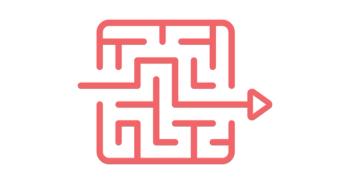
Pesticide Analysis in Cannabis: Choosing the Right Technique
A recent visit to my daughter at U.S. Army base Fort Sill left me admiring the efficiency of discrete roles within the Army-infantry, field artillery, medical, and even chemical corps-and how they interact. For any given mission, necessary personnel with a variety of roles are deployed based upon expertise to construct the most qualified team. After all, you would not want your field artillery radar operator, no matter how versatile his or her skills, to be the primary person responsible for medical care on the battle field.
In a loose sense, we parallel this approach in our laboratory. The presence of capable students and researchers, each with a technical niche to offer, prepares us for future opportunities. On top of that structure, we also aim to maintain this mindset for our instrument selection before beginning projects. The installment of core labs at UT Arlington (
Many compounds’ physiochemical properties provide a noticeable advantage toward gas chromatography (GC) or liquid chromatography (LC). Enough researcher effort in derivatization, ionization sources, and sample introduction systems can allow some of these compounds to cross platforms. This ingenuity can be a bragging point within a research lab, but ultimately a new approach on an alternate platform could still be inferior to the native measurement technique-and all that effort may have been wasted. You also have to think about how transferable such complex methods may be from lab to lab. We also task our students with the need to consider if their methods could be industry applicable. This approach helps with collaborations, method adoption, and critical thinking (1–3). Examples of these considerations include throughput, sample preparation, instrument robustness, cost, and necessary operator skill.
Pesticide analysis, particularly in the cannabis industry, provides a good example for examining the considerations involved in choosing a suitable analytical technique.
Oregon currently regulates 59 pesticides in cannabis, whereas California has proposed to regulate 66, nearly all at levels lower than those in Oregon (4). Application notes and discussions with vendors indicate that a focus is being placed on meeting these requirements by LC with tandem mass spectrometry detection (LC–MS/MS) (5,6). LC–MS/MS systems are typically more resilient to dirty sample matrices than GC–MS/MS systems. LC ionization sources are also becoming more capable and efficient across classes of compounds with heated zones, gas flows, and even dual-ionization sources (7,8). But that doesn’t change the fact that some compounds are simply more amenable to analysis by GC than by LC. Relying exclusively on LC could lead to the development of intricate LC–MS/MS methods that may be require experts to implement reliably.
In general, the best approach is likely to be keeping an open mind and using the most suitable technique in each case, whether that be LC–MS/MS or GC–MS/MS (9).
For example, chlordane, a pesticide proposed to be regulated in California, is meant for GC analysis. Chlorinated multi-ring systems just scream GC to me. Captan is another GC-exclusive compound on the California list that is in addition to those monitored in Oregon.
Daminozide presents another case. With its hydrazide and carboxylic acid termini, daminozide is much more polar than other pesticides regulated for use in cannabis. A single separation to retain this polar compound effectively and then efficiently elute the rest of the pesticides can be a bit difficult to achieve on the biphenyl or C18 phases we all have in the lab. A mixed-mode polar C18 column released last year shows the ability to increase retention of the polar compounds (10), but may leave some labs feeling anxious about introducing a new column to their inexperienced workforce. Extraction of daminozide after hydrating your leaf or flower is another issue since its log Kow is -3.1 (11).
Abemectin, with its macrocylic-like structure, has a low electrospray ionization efficiency, which can be challenging at Oregon’s action limit of 0.5 mg/L. The coveted “dilute-and-shoot” methodologies for universal detection at 0.02 mg/L proposed by California may just be a bit insurmountable. Some solutions to this issue could be monitoring electrospray ionization (positive ion mode) adducts or atmospheric pressure chemical ionization (APCI) ions (12). However, quantification through adducts induced by the mobile phase may lack reproducibility or negatively affect transitions of other compounds. Electrospray ionization is a much more broad-spectrum ionization source than APCI, meaning choosing APCI to benefit the abemectin response and a few other responses will be to the detriment of many others. Ultimately, this compound will require careful thinking about ionization fundamentals to detect it at very low levels. The California Bureau of Marijuana Control could also relieve some of these headaches by revisiting the need to propose an action level 25 times lower than Oregon.
Another important consideration in choosing a technique for these compounds is the sensitivity required. The California action levels for pesticides range from 1x to 100x lower (chlorfenapyr, cyfluthrin, and daminozide) than those currently enforced in Oregon (4). LC analysis of some of these compounds may be sensitive enough in Oregon, but California limits may force some labs to push their LC methods to the limit. Rather than grinding your wheels with current existing LC methods, it may be easier to achieve the needed sensitivity with GC–MS/MS for cases like these.
In summary, no matter how hard you want to believe that you will measure all your pesticides in cannabis by LC–MS, keep an open mind. Relying on LC–MS may be feasible in some states, but in my opinion, the Oregon and, especially, California lists of pesticides are really pushing toward the need for both LC–MS/MS and GC–MS/MS capabilities for robust and complete coverage. For the sake of safety and analytical advancement, I would not be disappointed about being proven wrong about this dual-instrument approach in the future.
Doug Carlton is a project manager for Collaborative Laboratories for Environmental Analysis and Remediation (CLEAR) at the University of Texas at Arlington, in Arlington, Texas. Doug is trained as an analytical chemist specializing in method development for liquid and gas chromatography with various spectroscopic and MS detectors, predominantly applied to environmental applications. He currently devotes time to developing methods for unknown and targeted compounds in soil, water, and other matrices possibly contaminated through industrial processes.
Disclosures:
This article was originally posted as part of The LCGC Blog series on
References:
- K.A. Schug, The LCGC Blog, Feb. 27, 2017.
http://www.chromatographyonline.com/lcgc-blog-value-student-internship - K.A. Schug, The LCGC Blog, Nov. 8, 2016.
http://www.chromatographyonline.com/lcgc-blog-nontraditional-research-funding-more-one-way-skin-cat - K.A. Schug, The LCGC Blog, Feb. 13, 2014.
http://www.chromatographyonline.com/lcgc-blog-what-optimal-training-provide-students-interested-career-industry - Bureau of Marijuana Control Proposed Text of Regulations,
http://www.thecannifornian.com/wp-content/uploads/2017/05/MCRSA.Lab_.Text_.pdf - "Analysis of Pesticide Residues in Cannabis Regulated by Oregon State Using LC/MS/MS,"
http://www.perkinelmer.com/lab-solutions/resources/docs/APP_Analysis_of_Pesticide_Residues_in_Cannabis_013707_01.pdf - "Quantitation of Oregon List of Pesticides and Cannabinoids in Cannabis Matrices by LC-MS/MS,"
https://sciex.com/Documents/tech%20notes/Quantitation-of-Oregon-List-of-Pesticides-and-Cannabinoids.pdf - "Dual Ion Source DUIS-2020 for Simultaneous ESI and APCI Measurement (Technical Report vol. 35),"
http://www.ssi.shimadzu.com/products/literature/lcms/C190-E132.pdf - " I Knew You Were Trouble: Expanding LC Methods to Include Difficult GC Compounds Using a Novel Ionization Technique,"
http://www.waters.com/waters/library.htm?locale=en_US&lid=134939278&cid=511436 - J. Kowalski, ChromaBLOGraphy (2016).
https://blog.restek.com/?p=24936 - "Determination of Pesticide Residues in Cannabis by LC-MS/MS,"
https://www.phenomenex.com/ViewDocument?id=determination+of+pesticide+residues+in+cannabis+by+lc-ms_ms+(tn-1224) - J. Kowalski, J.H. Dahl, A. Rigdon, J. Cochran, D. Laine, and G. Fagras, LCGC North Am.35, 8–22 (2017).
- S. Grimalt, O.J. Pozo, J.M. MarÃn, J.V. Sancho, and F. Hernández, J. Am. Soc. Mass Spectrom.16, 1619-1630 (2005).
Newsletter
Unlock the latest breakthroughs in cannabis science—subscribe now to get expert insights, research, and industry updates delivered to your inbox.


